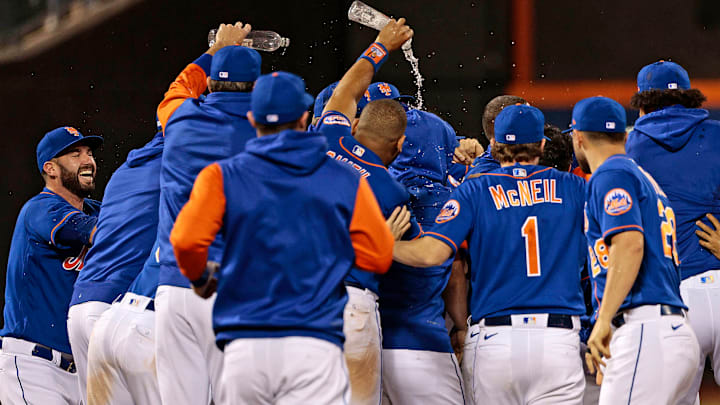3) The role players have been sensational, and that is a parallel to the 1986 Mets.
This is something similar to the 1986 Mets. The bench was terrific in their second championship season, and it featured future MVP Kevin Mitchell, future perennial 30-30 player Howard Johnson, and Tim Teufel. Danny Heep was pretty strong off that bench too, batting .282 with a .799 OPS that season.
Old friend Lee Mazzilli returned to the Mets in the middle of the 1986 season after the Pirates let him loose, and he was terrific off the bench too, with an .848 OPS with the Mets. Mitchell was in the middle of the 10th inning rally in Game 6 of the World Series, as he singled and scored the tying run on Bob Stanley’s wild pitch.
The Mets have had something similar this season, with Luis Guillorme, Daniel Vogelbach, Tyler Naquin, Darin Ruf, and recently, Mark Canha and Eduardo Escobar.
This year’s all contributed to this team in some way, whether it is on or off the field. Vogelbach’s demeanor has been critically acclaimed by both the players and the fans. And he has stepped up as the designated hitter since then. Naquin has had several big hits, while Guillorme has been excellent as a contact hitter and on the field.
Billy Eppler shaped the bench to resemble that of the 1986 squad. His first attempt, trying to platoon J.D. Davis and Dominic Smith failed, but this time he has received much better results from his trade acquisitions.
